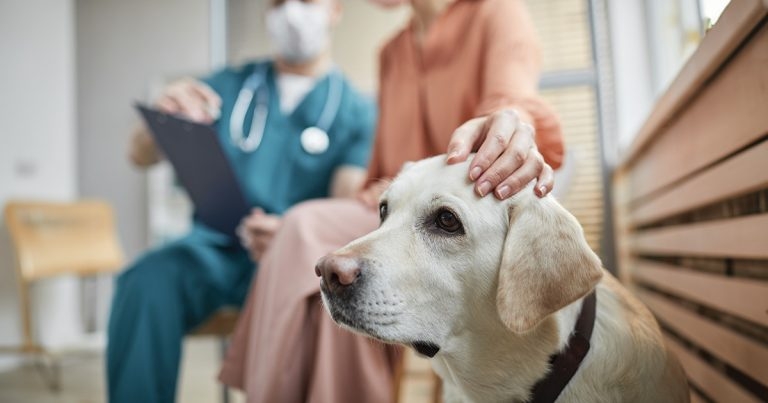1 Sept 2023
Referring patients and clients away from your practice’s care is sometimes the best solution in terms of patient and client care, as well as clinical outcome. However, it can also be a minefield, with some of the most complicated client complaints resulting from referrals…

Image © Seventyfour / Adobe Stock
It is no surprise that an entire section of the RCVS Code of Conduct for Veterinary Surgeons is dedicated to the subject of referrals. So, how can first opinion and referral centres work more closely together to deliver the highest possible standard of care?
If you are referring a patient to a referral centre, you are, in effect, recommending that centre to your client. The likelihood is they are consenting to the referral based on your advice – the number of clients who research and request a specific centre themselves remains relatively small.
You must be satisfied the hospital you are sending your patient to is competent to carry out the investigations or treatments required1. And this begs the question: how can you recommend a referral centre if you don’t know it?
Most referral hospitals will be very happy for you and your team to visit their site and meet their teams, so that you can be confident in making future recommendations. If you do not have time to visit in person, many will come to you for a chat about the facilities and services they offer and give you literature to support client conversations.
Building a relationship with the teams that will be treating your patients can also help you to be more confident in the care they will receive. It may be that you are able to specifically get to know the specialist or advanced practitioner who will be the lead on particular cases, but many centres now have client relationship managers who are responsible for the journey for all clients. They are also useful people to get to know.
If the centre has not reached out to you directly, this doesn’t mean it does not want to talk to you. Don’t be afraid to make the first move. And remember, given the variety of cases we see in practice today, you may need to develop relationships with multiple centres, both near and far, based on the needs of your clients and your caseload.
When recommending a referral centre to your clients, give them all of the relevant information to help them give informed consent.
It is the responsibility of the referring veterinary surgeon to inform clients of the level of expertise of the referral veterinary surgeon, and it is important not to misuse the terms “specialists” and “advanced practitioners”1.
Your recommended centre may have a mix of expertise, in which case the client needs to understand they may see individuals with different qualifications, and what this means for the care of their pet.
The likely cost of referral to a centre staffed with specialists rather than advanced practitioners may well have a difference, too. This is again something you should discuss with your client, so they are aware of the options available to them.
You may know exactly what expertise your patient requires, but in some cases, it may not be completely obvious from the investigations you are able to perform in your clinic.
Disciplines frequently overlap; for example, many cases that started out as medicine may well need surgical intervention. Are those seizures medical or neurological in origin? Depending on the presentation, a multi-disciplinary centre may be more appropriate and offer greater flexibility.
Otherwise, the client needs to understand that further referral may be required if the centre you first recommended cannot manage emerging aspects of the case.

One of the most common concerns I come across when discussing the relationship between a first opinion practice and a referral centre is the ease of referral. The referral centre absolutely has a responsibility to make this as straightforward as possible. As a busy first opinion vet, with a waiting room full of clients, once the decision is made to refer a patient, getting them booked in efficiently is essential.
Understanding the process can help to reduce delays and frustrations for both parties. As well as a full clinical history, including laboratory and imaging reports, a centre may request a case summary so it can understand what, in the presenting signs and history, concerns you as the referring clinician. The centre may request this is a certain way (for example, via a portal) to ensure its vets do not miss any pieces of information and are able to track the process for their own governance.
If you have any concerns or questions about the process, speak to your centre. It will be striving to make the experience as easy as possible for you and will be pleased to hear your feedback, both positive and constructive.
It is critical that clients’ expectations are set regarding the likely costs of treatment. Managing client costs in a referral centre is no different to a first opinion practice and, depending on the case, they can mount up quickly, frequently exceeding common pet insurance limits.
It is up to the referring veterinary surgeon, as well as the referral centre, to ensure the client understands the situation1.
The centre will be able to provide you or your client with an estimate for at least the most likely initial diagnostics and treatment, as well as possible scenarios that could arise. Some referral centres require a deposit payment up front. Again, make sure your client is aware of this.
Fixed pricing is becoming more common, to give clients a clearer view of costs. This may or may not be advertised, so do ask your centre about it.
The availability of fixed pricing is partly dependent on the type of referral you are making, and it is common that centres will only offer fixed pricing for surgical procedures. It is also worth checking the centre’s policy on insurance claims.
The processing of direct claims is no longer a given, with more and more practices – both first opinion and referral – no longer accepting these types of claims. If the centre does accept direct claims, it is likely they will want to review the full clinical history, including anything from a previous practice, or speak to the insurer on the client’s behalf to assess the likelihood that the claim will be paid. The centre may be able to offer you information detailing its policies or may prefer to contact your client directly.
The referral centre should report promptly on the case following discharge, so you can advise and continue to care for the patient appropriately. Do not be afraid to chase up a case report if you have not received it when you need it.
Are you clear about who provides postoperative or procedural care? This will often be a joint responsibility, but consider what you intend to charge your client for this service.
The majority of practices include the cost of follow-up appointments in their surgical or hospitalisation charges, but since your practice did not charge for this care, you may want to charge additionally for these consultations.
The referral centre should have made a provision to provide the referring veterinary surgeon with advice on a 24-hour basis for the continuing care of the patient post-discharge2, so don’t be afraid to use this service. If you use an external out-of-hours provider, encourage your client to mention where their pet was treated so that they can reach the same service.
If you receive a complaint relating to the referral service, your service or both, communication with the centre is key to resolving it. Centres will have their own policies for complaints policy, but ensure that they are willing to work with you to attempt to resolve your clients’ concerns.
Equally, you may have a complaint following a referral you have made. Feedback is essential to all of us, and referral centres are no exception, despite even the highest levels of expertise. The teams should be open to your feedback and be keen to work with you to resolve any concerns you may have.
In summary, the basis of a good referral for you, for your patients and for your clients is founded in good communication. Building a synergistic relationship with your local referral centre will enable you to manage your clients’ expectations and ensure they are met, at a time when they are likely already facing a stressful and emotional situation.
By working with referral teams, you will be able to amplify the client experience and, therefore, reach the best possible outcomes for your patients.